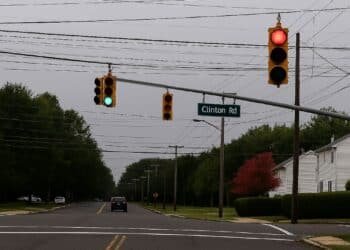New Jersey’s Big Tree List is both a celebration of our natural heritage and a warning about what’s at stake. Since the 1930s, the state has cataloged its largest trees, but overdevelopment threatens many of these living monuments.
To see the Big Tree List/Registry, click here.
The History of New Jersey’s Big Tree Program
- The New Jersey Forest Service launched the Big Tree Conservation Program in the 1930s, originally called the Champion Tree Program The Official Web Site for The State of New Jersey New Jersey Conservation Foundation.
- In 2019, the Champion Tree Program was changed to the Big Tree Conservation Program.
- The trees in the program have been nominated by New Jersey residents, and the program documents the largest native and naturalized trees across the state, measuring height, trunk circumference, and crown spread.
- Many of these trees are also recognized as Heritage Trees or Witness Trees, meaning they’ve stood for centuries and witnessed historic events The Official Web Site for The State of New Jersey.
- Residents nominate trees, and the registry now includes over 560 entries, ranging from sycamores to tulip poplars New Jersey Conservation Foundation.
The Biggest Trees in New Jersey
Some of the most remarkable giants include:
| Tree | Species | Location | Notable Facts |
|---|---|---|---|
| George Washington Sycamore | American Sycamore | Hope Township, Warren County | 8.05 m girth; legend says Washington slept under it Monumental Trees |
| Keeler Oak | White Oak | Mansfield Township, Burlington County | 6.85 m girth; centuries old Monumental Trees |
| Historic Tulip Tree | Tulip Poplar | Trenton, Mercer County | Planted in 1682; one of NJ’s oldest Monumental Trees |
| Red Maple Giant | Red Maple | Canton, Salem County | 6.71 m girth; located on private land Monumental Trees |
The George Washington Sycamore
One of the most legendary entries on New Jersey’s Big Tree List is the George Washington Sycamore in Hope Township, Warren County, a living witness to Revolutionary history.
- Located along Route 519 near the historic Moravian village of Hope, this massive American Sycamore (Platanus occidentalis) is estimated to be over 400 years old Union College – NJ swayzeinnfarm.com.
- On July 26, 1782, General George Washington stopped beneath its spreading limbs while traveling from Philadelphia to Newburgh, NY. Exhausted by the summer heat, he dismounted his horse and rested under the tree’s shade Union College – NJ swayzeinnfarm.com.
- The tree stood in front of the Swayze family’s stone house (built in 1759). The Swayzes, Loyalists during the Revolution, had fled to Canada, so Washington never met them Union College – NJ.
- Local lore says Washington’s brief pause forever tied the tree to American history, earning it the nickname “George Washington Sycamore” or “Buttonball Tree.”
- Today, the tree still towers over the roadside, with a trunk circumference of more than 26 feet (8.05 m), making it one of the largest sycamores in the state Monumental Trees.
Why the Big Tree List Matters
The George Washington Sycamore is more than a natural wonder, it’s a symbol of endurance and memory. It connects New Jersey’s landscape to the nation’s founding story, reminding us that trees are not just scenery but participants in history.
And like many giants on the Big Tree List, it faces threats from development, road expansion, and environmental stress. Protecting it means preserving both ecological heritage and cultural identity.
These trees are not just biological marvels, they are living landmarks tied to New Jersey’s cultural history. Lenape chiefs met under one, Joyce Kilmer found inspiration in another, and local communities have long gathered in their shade New Jersey Conservation Foundation.
Sources: Union College – NJ swayzeinnfarm.com Monumental Trees
Overconstruction and the Threat to Big Trees
- Rapid suburban development and highway expansion have put many of these trees at risk.
- Trees that once stood in open farmland or churchyards are now surrounded by parking lots, subdivisions, and commercial sprawl.
- Overconstruction leads to soil compaction, root damage, and reduced water availability, all of which shorten the lifespan of heritage trees.
- The loss of canopy cover also worsens flooding, heat islands, and biodiversity decline in New Jersey’s densely populated regions MyCentralJersey.com.
Why Protecting Them Matters
- Big Trees are genetic reservoirs, carrying traits that help forests adapt to climate change The Official Web Site for The State of New Jersey.
- They provide habitat for countless species, from owls to pollinators.
- They are storytellers of New Jersey’s past, linking us to Indigenous history, colonial times, and local folklore.
- Trees act as natural stabilizers in New Jersey’s landscape. Their deep root systems absorb and filter rainwater, reducing runoff and helping to prevent flooding in neighborhoods and towns. By anchoring soil, they guard against erosion and keep waterways cleaner. Their broad canopies slow rainfall before it hits the ground, giving the earth more time to soak it in. Together, these functions make trees essential to a balanced environment, quietly knitting ecosystems, communities, and climate resilience into one living fabric.
New Jersey’s official state tree is the Northern Red Oak (Quercus rubra), designated in 1950 for its strength, beauty, and longevity Wikipedia The Official Web Site for The State of New Jersey hunterdon.njaes.rutgers.edu.**
New Jersey’s State Tree: The Northern Red Oak
- Adopted on June 13, 1950, the Northern Red Oak was chosen by Governor Alfred E. Driscoll and the State Assembly to represent New Jersey The Official Web Site for The State of New Jersey hunterdon.njaes.rutgers.edu.
- It was selected because of its strength, dignity, structural beauty, and long life, qualities seen as symbolic of the Garden State The Official Web Site for The State of New Jersey hunterdon.njaes.rutgers.edu.
- The tree is native to North America and thrives in New Jersey’s soils, making it a perfect ecological fit.
- Quick facts:
- Height: 60–70 feet
- Spread: 50–60 feet
- Growth rate: Fast
- Fall color: Brilliant red to orange
- Lifespan: Several centuries The Official Web Site for The State of New Jersey
Cultural and Ecological Significance
- The Northern Red Oak’s deep red autumn foliage makes it one of the most striking trees in the state’s landscape.
- Its acorns feed wildlife such as deer, squirrels, and birds, while its broad canopy provides shade and habitat.
- Historically, its strong wood has been used for furniture, flooring, and construction, tying it to New Jersey’s working heritage The Official Web Site for The State of New Jersey.
- The tree’s resilience against disease and adaptability to suburban environments also make it a symbol of endurance amid development pressures.
Connection to the Big Tree List
Many of New Jersey’s champion trees (biggest trees) are Northern Red Oaks, showing us their dominance in the state’s natural heritage. Just as the George Washington Sycamore connects us to Revolutionary history, the Red Oak represents the living identity of New Jersey itself.
New Jersey’s Big Tree List is more than a registry, it’s a reminder that our state’s identity is rooted in these giants. Protecting them means balancing growth with conservation.
As over construction continues, these trees stand as both symbols of resilience and warnings of fragility.


































